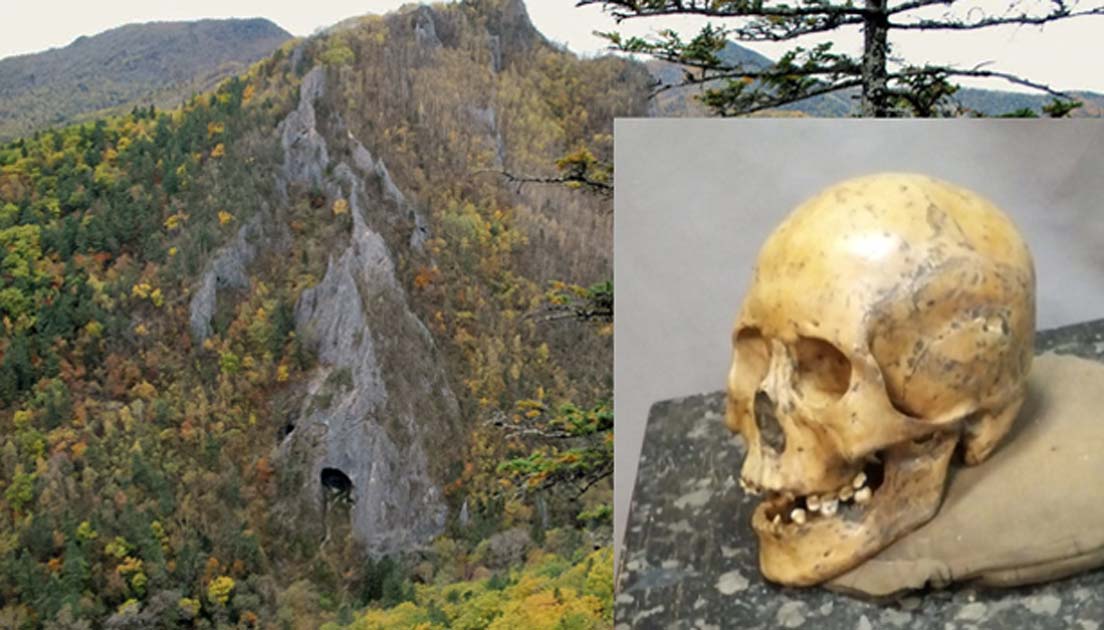Study Reveals Stone Age Women Have Modern Relatives Living Nearby
A group of researchers studying 7700-year-old DNA found in a remote cave in Far East Russia suggest that the two women were related to people who live in this distant and bitterly cold corner of Asia today.
The Two Women Were Found in “Devil's Gate”
The scientists extracted DNA from the teeth and bones of the human remains found in a cave known as Devil's Gate. Located in a remote mountainous area close to the far eastern coast of Russia, the cave was first excavated by Soviet researchers in 1973. The site is estimated to be over 9,000 years old and the women appear to have died there about 7,700 years ago.
Along with many stone and bone tools, the wood of what was once a place of habitation, and woven wild grass that is one of the earliest examples of a textile, were the incomplete skeletons of five humans. The best samples for analysis from the cave were taken from the skulls of two females: one who died in her early 20s, the other close to 50. The middle-aged woman’s DNA revealed she had brown eyes and thick, straight hair, and was lactose intolerant.
- Ancient Ancestors Had More DNA Than We Do Now: Have we Devolved?
- A Golden Age of Ancient DNA Science Begins

One of the skulls from Devil’s Gate Cave, Russia. (Elizaveta Veselovskaya)
The Significance of the New Finds
The study, published in the journal Science Advances, is the first to acquire nuclear genome data from ancient mainland East Asia and contrast the results to modern populations. The findings show that there was no massive migratory interruption in the area for nearly eight millennia, which means that farming possibly spread through gradual cultural changes in the region, rather than by an influx of farmers. Also, this similarity to nearby modern populations and the low levels of additional genetic material in the Ulchi imply a high level of genetic continuity in this region during the Holocene, a pattern that markedly contrasts with that reported for Europe.

Map of Asia showing the location of Devil’s Gate (black triangle) and of modern populations forming the regional panel in the study’s analysis. (Siska et al.)
Senior author Andrea Manica from the University of Cambridge, who conducted the work with an international team, including colleagues from Ulsan National Institute of Science and Technology in Korea, and Trinity College Dublin and University College Dublin in Ireland told Phys Org:
"Genetically speaking, the populations across northern East Asia have changed very little for around eight millennia. Once we accounted for some local intermingling, the Ulchi and the ancient hunter-gatherers appeared to be almost the same population from a genetic point of view, even though there are thousands of years between them."
- How Breeding with an Ancient Human Species gave Tibetans their Head for Heights
- Study Casts New Light on Diseases We Inherited from Neanderthals
Further Support for the 'Dual Origin' Theory of Modern Japanese People
It’s also interesting to point out that the new finds clearly indicate a close genetic affinity between the Devil’s Gate women and modern Japanese and Koreans, who nowadays live further south. As it has been suggested before, based on both archaeological and genetic analyses, modern Japanese (and Koreans) supposedly have a dual origin, descending from an admixture event between hunter-gatherers of the Jomon culture and migrants of the Yayoi culture, who brought wet rice agriculture from the Yangtze estuary in southern China through Korea.

Fifteen populations with the highest shared drift with Devil’s Gate, color-coded to correspond with the regions in the above map. (Siska et al.)
Lead author Veronika Siska, also from Cambridge, said,
"These are ethnic groups with traditional societies and deep roots across eastern Russia and China, whose culture, language and populations are rapidly dwindling. Our work suggests that these groups form a strong genetic lineage descending directly from the early Neolithic hunter-gatherers who inhabited the same region thousands of years previously."
However, Manica is reluctant to make any definitive conclusions yet, as she strongly believes that further research and DNA data from Neolithic China is required to verify such theories.

View from the interior of Devil's Gate Cave. (Yuriy Chernyavskiy)
Top Image: Devil's Gate Cave in far east Russia. (Yuriy Chernyavskiy/Creative Commons) Insert: A human skull found at Devil’s Gate Cave from 7,700 years ago. (Ulsan Institute of Science and Technology)



















